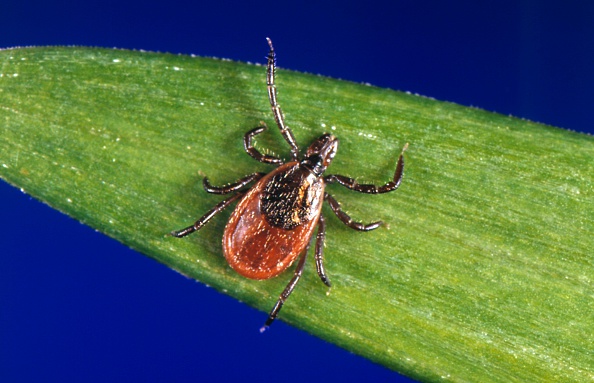Hamilton is now identified as an “estimated risk area” for Lyme disease.

The designation follows the discovery of black-legged ticks during active surveillance last spring and fall in the same location.
Hamilton Public Health’s Susan Harding Cruz says the location is Christie Conservation Area and the estimated risk area designation applies to everything within a 20-kilometre radius.
Harding Cruz adds that black legged ticks were also found in either spring or fall, during dragging at Borer’s Falls and on Royal Botanical Gardens (RBG) property near McMaster University.
More than 800 ticks were also submitted to public health for testing by residents in 2017.
Most of them were common dog ticks, which do not carry Lyme disease, but 78 were black legged ticks and eight of them have tested positive for the disease after being picked up in Dundas and Glanbrook.
Lyme Disease starts with flu-like symptoms, but if left untreated, Associate Medical Officer of Health Dr. Ninh Tran says it can lead to “debilitating” health problems including nerve and heart damage.
Hamilton Public Health recommends the following Lyme disease prevention tips:
- Know your ticks & where to expect them: In Ontario, the blacklegged tick (also known as a deer tick) is the only known tick that can transmit the bacteria that causes Lyme disease. Blacklegged ticks (also called deer ticks) live in woodlands, tall grasses and bushes.
- Prevent tick bites: Wearing light-coloured clothing outdoors makes ticks easier to spot. Be sure to wear long pants, a long sleeved shirt, socks and closed toe shoes. Tuck your pants into your socks, and use an insect repellent containing DEET or lcaridin.
- Do a tick check: After spending time outdoors in wooded or bushy areas carefully check your full body and head for attached ticks. Also, check your children and pets for ticks (shower to remove ticks before they become attached).
- Remove ticks quickly using the correct methods: If you find a tick on your body, remove it as soon as possible by using proper techniques such as using tweezers to pull the tick gently but firmly straight up so that the full head is also removed.
- Know the signs & symptoms: Symptoms of Lyme disease usually start one to two weeks after getting a tick bite, but can begin as early as three days to as long as four weeks after a tick bite. Signs & symptoms can include a circular red rash that slowly expands around the bite, known as a “bulls-eye,” as well as skin rash, fatigue, stiff neck, joint pain, and headache.
- Capital gains changes are ‘really fair,’ Freeland says, as doctors cry foul
- Ontario doctors offer solutions to help address shortage of family physicians
- ‘Dangerous message’: Experts slam anti-sunscreen claims circulating online
- ‘Trying not to die’: Tourism operators loaded with debt despite rising demand









Comments